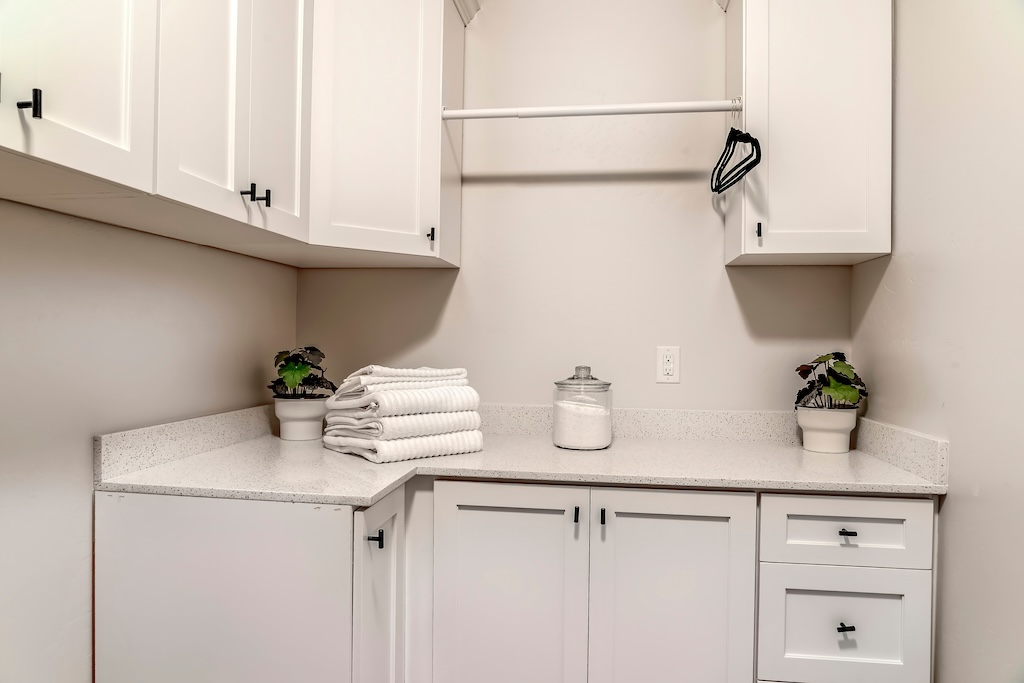Decorating compact areas presents unique challenges, notably in selecting paint colors. The appropriate shade can turn a constricted area into a seemingly more expansive and welcoming space. While the conventional wisdom suggests that bright whites are the quintessential choice for tiny spaces, a broader palette is available that can augment the perception of space without compromising on style. This blog aims to navigate through the optimal paint colors for small areas, providing suggestions to conjure an illusion of a more expansive room while infusing individuality.
Soft, Light Hues
Light colors are a popular strategy for small spaces because they help make the room feel open and airy. Soft hues such as light blues, pale greens, and creamy yellows not only reflect natural light to brighten the space but also contribute to a larger appearance. These colors can also evoke a sense of calm and tranquility, ideal for crafting a soothing environment in compact areas. Their gentle presence can transform a cramped corner into a serene retreat, making them a top choice for those looking to enhance small living spaces.
Warm Neutrals
Warm neutrals like beige, taupe, and soft grays are perfect for adding both depth and warmth to a small space. These colors provide a cozy atmosphere, contrasting with the starkness of white, without making the room feel smaller or claustrophobic. They offer a versatile backdrop that accommodates various decorating styles, from modern minimalism to rustic charm, allowing for an array of textures and accent colors to be introduced seamlessly into the space.
Pastel Tones
Pastels are a subtle way to bring color into a small room without it feeling overwhelming. Shades such as soft pinks, lavenders, and mint greens lend a playful yet refined touch to interiors. Especially effective under natural light, these hues enhance the sense of space and create an inviting atmosphere. Their light-reflective qualities can make a small room feel immediately more open and less boxed-in, which is particularly beneficial in areas with limited square footage.
Moody and Dark Shades
Despite common misconceptions, dark colors can be highly effective in small spaces if used judiciously. Deep blues, greens, and even blacks can create a depth illusion, causing the walls to seemingly recede. This color strategy introduces an element of drama and sophistication to the space. To counterbalance the potential for a darker color to overpower, it is advisable to incorporate light-colored furnishings and decor, or perhaps employ a dark hue on a single accent wall while keeping the surrounding walls lighter.
Reflective Metallics
Metallic paint finishes like soft golds and silvers introduce a luxurious element to small spaces. These reflective shades help distribute light throughout the room, enhancing the openness and adding a touch of glamour. When using metallics, it’s best to apply them sparingly, such as on a feature wall or within alcoves, to prevent the space from feeling too intense or crowded. This approach allows for a sophisticated and upscale look without overwhelming the small area.
Bright and Cheery Colors
Vibrant colors such as sunny yellows, soft corals, or pale turquoise can energize a small room. These lively shades are particularly effective in spaces lacking in natural light, as they mimic the cheerfulness of daylight. To maintain a balanced aesthetic, pair these bold colors with neutral-toned furniture and accessories, ensuring the space remains airy and not overly saturated. This strategy helps to maximize the perceived size of the area while injecting vibrant energy and personality into the room.
Monochromatic Scheme
Adopting a monochromatic scheme by using different shades of the same color can create a cohesive look that visually expands the space. For example, painting the walls, trim, and ceiling in varying shades of the same light color can help blur the room’s boundaries, making it appear larger and more unified. This technique not only simplifies the visual palette but also enhances the perception of spaciousness, making it a clever choice for small interiors.
Final Thoughts
Selecting the right paint color for a small space is a delicate balance between creating an illusion of more room and expressing personal style. Whether opting for soft hues, warm neutrals, playful pastels, dramatic darks, reflective metallics, bright colors, or a monochromatic scheme, each choice offers a unique way to enhance and transform a small area. Ultimately, the best color for any space is one that not only reflects your personal taste but also complements the functional needs of the room. For more ideas on decorating and choosing paint colors, visit our website at sisupainting.com and explore our blog at sisupainting.com/blog.





No comment